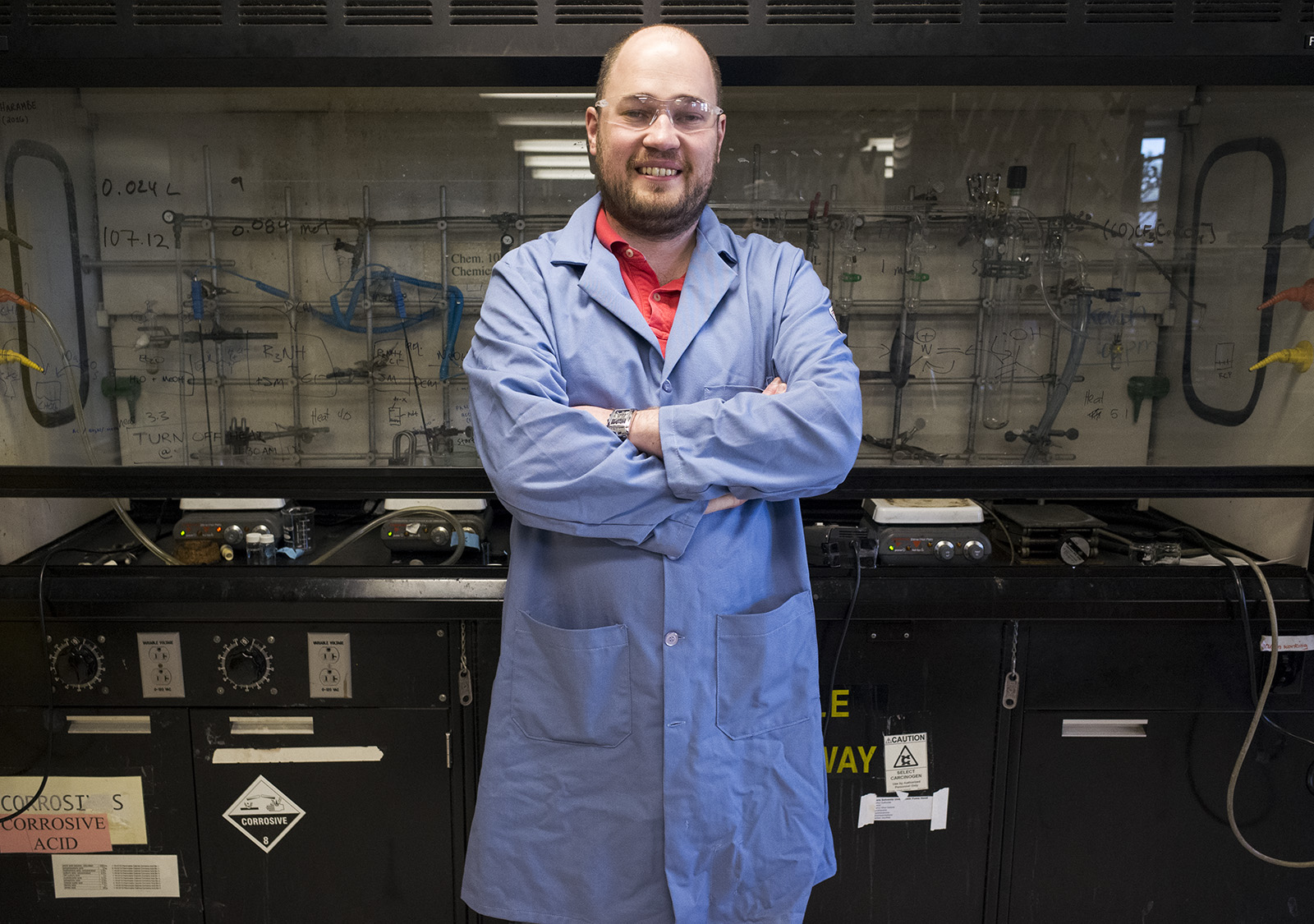Remodeled chemistry course allows for student research, publishing

Students in a revamped inorganic chemistry class taught by assistant professor Alex Spokoyny were able to collaboratively publish a paper in a peer-reviewed scientific journal. (Ken Shin/Daily Bruin staff)
By Raymond Le
Feb. 20, 2018 10:46 p.m.
A newly revamped chemistry course allows undergraduate students to conduct independent research and publish a paper in a science journal.
This quarter, the chemistry department remodeled the curriculum of Chemistry C174: “Inorganic and Metalorganic Laboratory Methods” to allow students to pursue an independent group research project rather than follow an established lab procedure. Alex Spokoyny, an assistant chemistry professor who teaches the class, said most experimental science classes tend to focus on achieving a specific result through a concrete procedure rather than actually conducting research.
“One thing I thought would be cool for the upper division lab, where the students know a lot of techniques, was to give them something unknown instead of a cookbook-type assignment where they follow instructions and procedures,” Spokoyny said.
One group of students wrote a paper published in Dalton Transactions, a peer-reviewed scientific journal, on the efficient synthesis of air-stable dimer complexes with biaryl phosphine ligands.
Shen Yi, a graduate student in inorganic chemistry currently enrolled in the course, said her class divided into six groups to conduct an experiment testing catalysts. She said the different groups tried new methods to see which worked best.
“With each person having a slightly different job, it’s more about students doing different things in collaboration for a bigger project,” she said.
With successful results, the students were able to co-author the paper.
Kent Kirlikovali, a teaching assistant for the course, said once students complete lower-division courses and learn basic lab techniques, they can begin to tackle more advanced research problems. Students in the course repeat experiments to find the best results through trial and error, he said.
“I think it’s a great opportunity for chemistry courses, specifically upper-division (courses), to have more research-based instead of old-school, procedure-type problems to promote collaboration and working together to think of solutions,” he said.
Kirlikovali added students take ownership of the class’ assignments because they could lead to publishable research.
“They don’t treat it as busy work, but their project as their project,” he said.
Kirlikovali said more students enrolled for winter quarter 2018 and thinks many students may want to take the course because they could potentially author a research paper.
“It looks good on their resume for graduate schools,” he said. “There’s a potential reward in the end that they can say it’s their work and share it with the greater community.”
Yi said she thinks more upper-division chemistry courses should use this class model because it allows to students to collaborate with each other.
“Instead of professors telling (us) what to do, we ask each other, ‘What do you think?’” she said. “This is useful because chemistry is very research-based.”

